Have you ever dreamed of an Antarctica expedition, but are concerned cruising (or cruising to this region) isn’t right for you? We can relate, as we spent nine nights on Atlas Ocean Voyages in Antarctica and weren’t sure what to expect. Today, we’re sharing what nobody tells you, from the breathtaking experiences to the unexpected challenges.
Our family and friends know we love cruises. But when we told them we were going on an Antarctica cruise, they thought we were crazy. Would we survive the Drake Passage? What is there to actually do and see in Antarctica? Was this really our kind of adventure?
To be honest, we were wondering many of the same things.
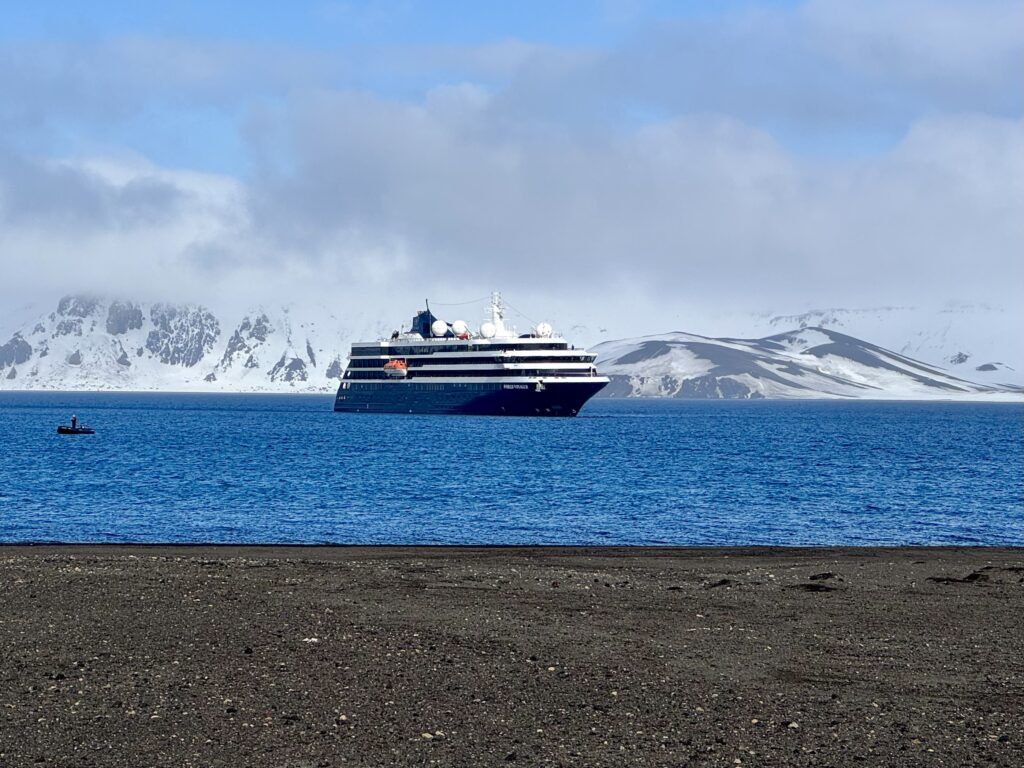
Though in the end, we survived and returned with lessons learned and lasting memories.
An Antarctica Expedition Requires a Total Mind Shift
One of the biggest mistakes travelers make isn’t about packing or not being prepared for potential seasickness— it’s approaching an Antarctica expedition just like any other cruise. Because it’s not!
An expedition to Antarctica requires a complete mindset shift. It isn’t about poolside lounging, casino nights, or Broadway-style shows. Instead, it is about embracing the unexpected and living in the moment. This took some adjusting for us megaship enthusiasts.
On our second day at sea, we experienced some of the roughest possible conditions in the Drake Passage with 10+ meter swells. It was difficult to walk a straight line, and all outdoor decks were closed. Thankfully, we didn’t experience seasickness ourselves, but most of our fellow passengers and crew were down for the count.
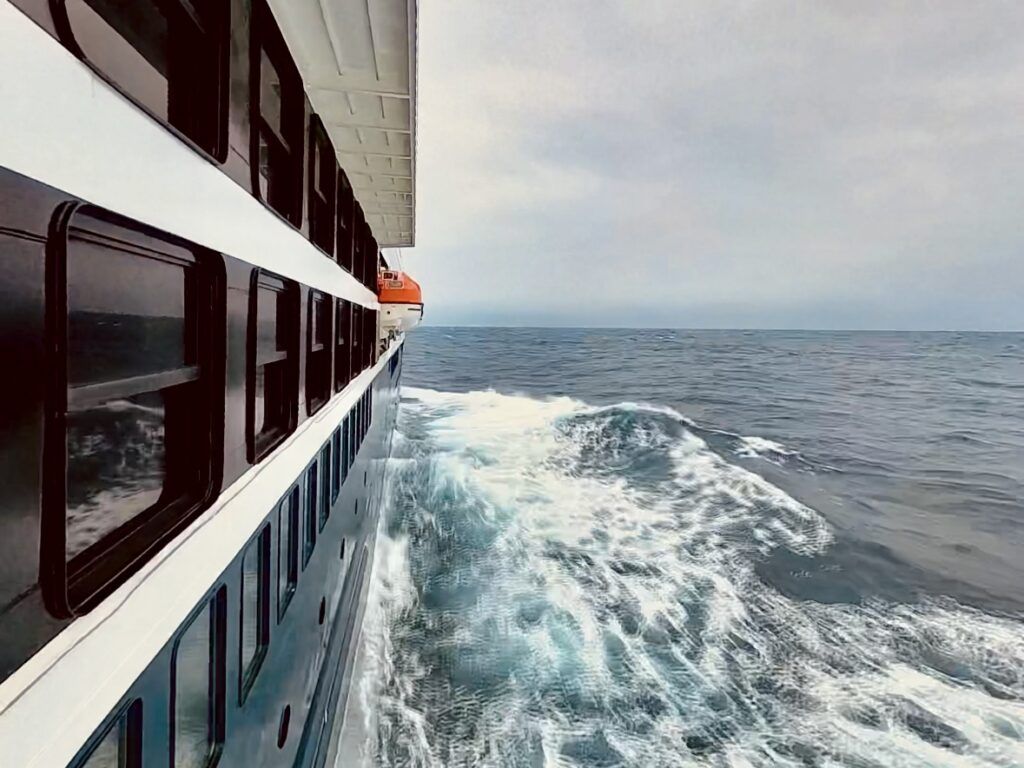
That’s when it started to sink in for us. We weren’t simply checking another destination off our bucket list. We were merely visitors heading to this pristine White Continent, playing by nature’s rules.
From that point, we started to look at the journey differently. Instead of stressing about the schedule, we just enjoyed whatever Antarctica decided to show us that day. So, whether it was penguins, icebergs, or watching the snowfall from the lounge, it was all part of the adventure.
It’s important to know ahead of time that you’re not booking a vacation, instead you’re joining an expedition. Your itinerary? Think of it more like a suggestion than a schedule. Those shore landings? They might happen, they might not. That perfect penguin photo you’ve been dreaming about? Well, nature doesn’t always cooperate with your Instagram plans.
When our captain announced, “We have arrived at Tower Island, but you cannot see it,” due to a sudden snow squall, I laughed instead of getting disappointed.
In the end, we still got to do and see a lot during our voyage, but it wasn’t on our terms. It was all guided by the ever-changing weather conditions.
The Atlas Ocean Voyages Difference
If you’re considering an Antarctica expedition, it’s also important to know that the cruise line you choose makes a huge difference. We sailed with Atlas Ocean Voyages, and a few things really stood out.
First, ship size matters. Our expedition ship, World Voyager, carried just 144 passengers. This meant passengers went ashore in a few waves as Antarctica has strict rules, only allowing 100 people ashore at a time.
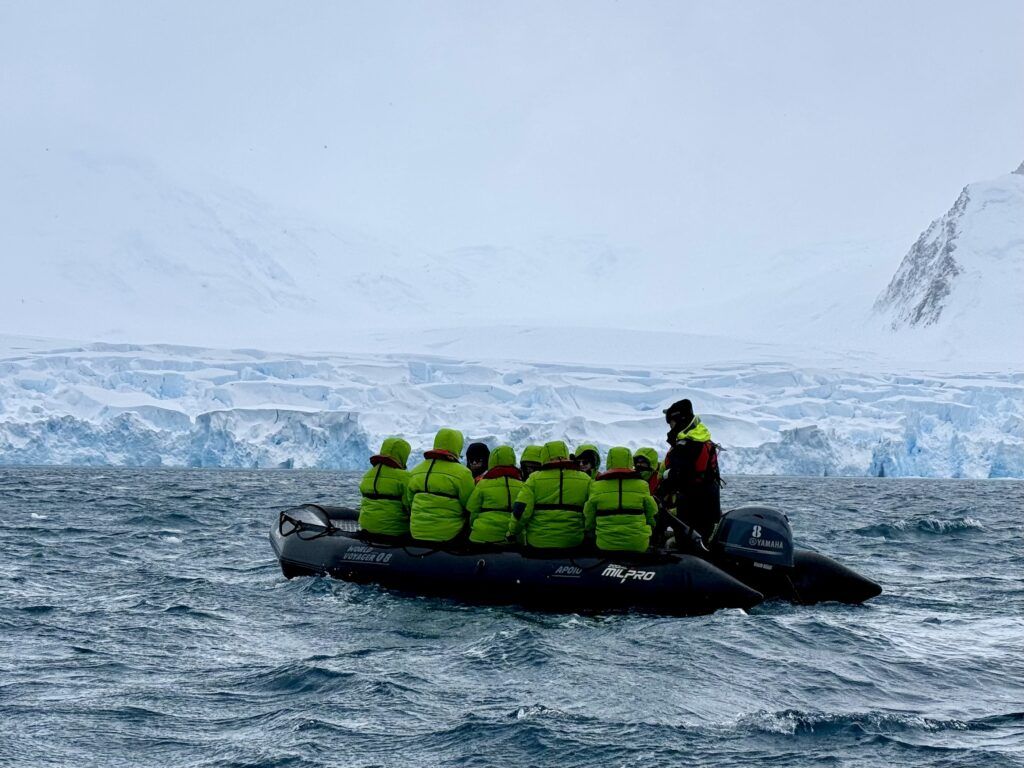
So if you’re on one of the larger ships in the region with 200 or 300 passengers, you’ll need to wait your turn and may get less total time ashore. Or, your chances of a zodiac cruise scouting for wildlife may lessen as weather conditions worsen. There were days that operations had to stop or started later than expected due to the weather or the sea conditions.
Now, this isn’t even taking into account larger ocean ships that claim to “visit” Antarctica as these ships merely sail in the region with no potential to get off the ship and explore.
Second, we were surprised by how many amenities Atlas packs into its yachts. Some expedition ships in Antarctica are retrofitted research vessels with questionable accommodations. However, that’s not the case with Atlas Ocean Voyages’ staterooms. In fact, our beautiful 270-square-foot Horizon stateroom boasted a drop-down window, a comfy queen bed, and a bathroom with a rainfall shower.
Like typical ocean cruise ships, it had a main dining room, coffee shop, spa, fitness center, and a couple of bars and lounges as well.
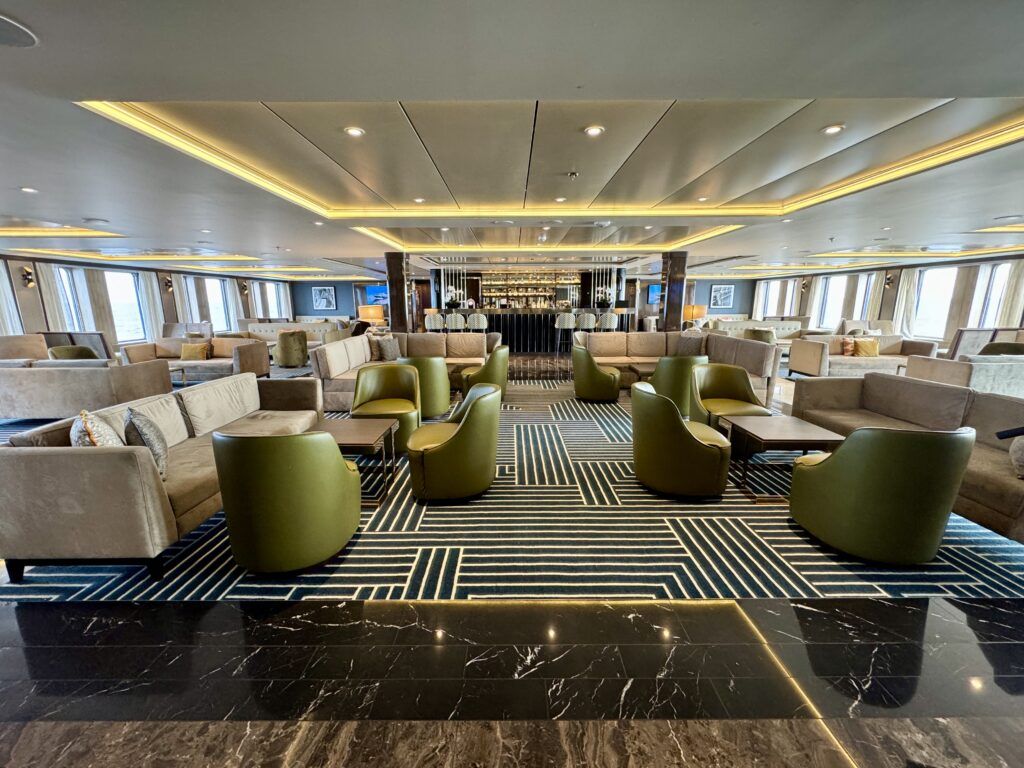
The food was surprisingly good, too. The Wagyu burger and French fries from the free 24/7 room service were irresistible. In the main dining room, the roasted rack of lamb and the Portuguese sausage and cheese tart were additional highlights.
One night, Heidi couldn’t find a chicken dish or an alternative menu item she liked. So, the chef made a custom dish for her. That’s the personalized service you get with a luxury cruise line. We were surprised to see such attention to detail on an Antarctica expedition ship.
Further, the all-inclusive nature of Atlas Ocean Voyages made things super simple. Our fare included:
- Charter flights from Buenos Aires to Ushuaia
- A pre-cruise hotel night in Buenos Aires
- All shore landings and zodiac rides
- All food and drinks (including the good stuff!)
- Even emergency evacuation insurance
The Antarctica Expedition Team
But honestly, it was the expedition team that made the biggest difference. These weren’t just tour guides or shore excursion staff members. Instead, they were passionate experts and genuinely enthusiastic about sharing their knowledge.
The team was led by Jean-Roch, an experienced expedition leader who coordinated the 13-member team with impressive calm and adaptability. When weather conditions changed rapidly, Jean-Roch and the Captain would quickly come up with alternative plans.
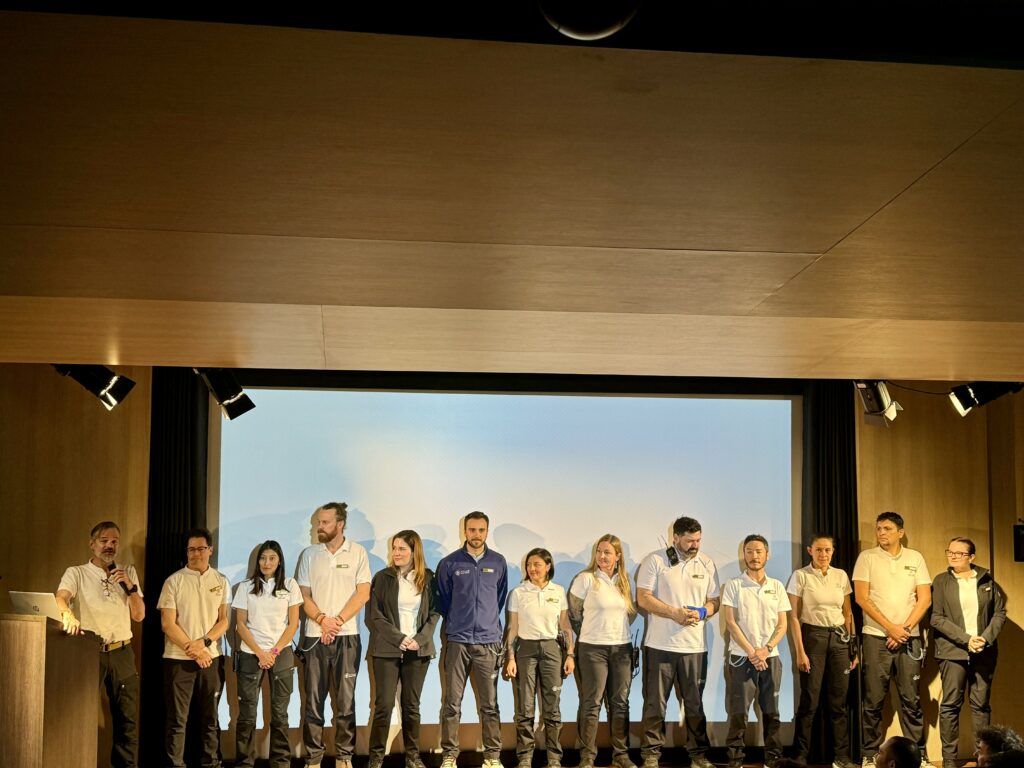
The team always focused on maximizing our experience while prioritizing our safety. The daily briefings not only prepared us for what to expect but also helped us understand the “why” behind any itinerary changes.
The expedition staff was an eclectic mix of biologists, naturalists, and outdoor adventure specialists. They were an international team hailing from the U.S., Canada, Argentina, Norway, and other countries.
Whether we were trekking along the coastline or just wandering around the ship, they were always approachable and friendly. They gave insightful lectures in the ship’s Auditorium on everything from Antarctic wildlife and geography to the history and even geopolitics of the continent. These educational talks significantly enhanced our appreciation of what we were seeing.
The Challenging Realities of Antarctica Expeditions
Regardless of which cruise line or expediton vessel you choose, cruising to Antarctica comes with some inherent challenges and realities that require understanding and flexibility.
Crossing the Drake Passage
You’ve probably heard that the Drake Passage is one of the roughest stretches of water in the world. Honestly, that’s not an exaggeration. We crossed with 10-12 meter swells (that’s 30-40 foot waves for my fellow Americans).
What does that actually feel like? During our crossing, it wouldn’t be a stretch to say we were bouncing off the hallway walls. Looking out to the horizon, you could clearly see the ship pitching and rolling. Not to mention, the waves would routinely come crashing up against our deck 5 windows.
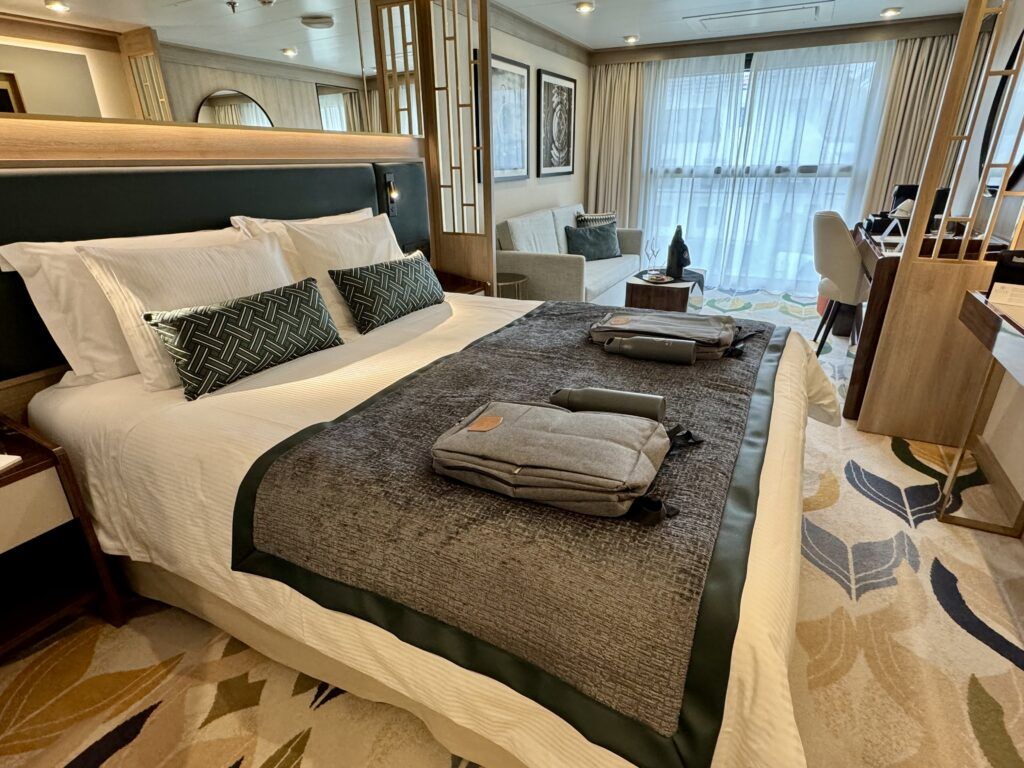
We thankfully didn’t experience seasickness ourselves, but many others did. It really dawned on us after dinner when went to the two lounges and found them both empty. Apparently, we were the only ones in good enough condition for a night cap.
Yet, you shouldn’t let the possibility of rough seas stop you from taking an Antarctica expedition. The conditions when crossing the Drake Passage are really a roll of the dice. Thus, it is possible you’ll experience what cruisers call the “Drake Lake” (calm waters) or the “Drake Shake” (rough seas). In fact, on our way back, the seas were much calmer. The conditions were also sunny and clear, making our return trip back to Ushuia a pleasant one.
While we have never been seasick, we still packed some ginger chews for this trip. The ship also had plenty of green apples around, another natural remedy. Still, if you’re planning this cruise, it’s worth discussing options with your doctor beforehand, even if you don’t normally experience motion sickness.
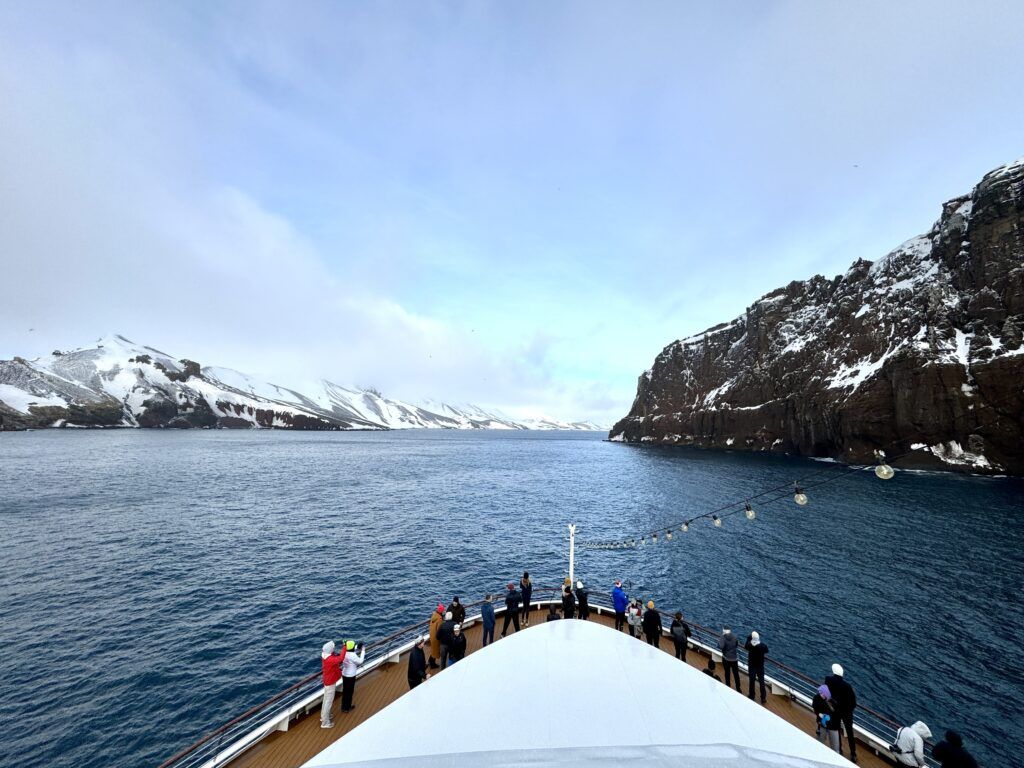
At the Whim of Mother Nature
Once you’ve made it through the Drake Passage, there’s still weather unpredictability dictating your course.
Out of our planned eight stops on our Antarctica expedition (a mix of shore landings and zodiac rides), we only successfully made five. In fact, our itinerary even listed most days as “Captain’s Choice” rather than specific locations, acknowledging from the start that Mother Nature makes the final decisions.
The weather in Antarctica can change dramatically in minutes. For instance, one day we experienced relatively mild 30°F temperatures and sunshine at Deception Island, allowing us to complete two successful landings.
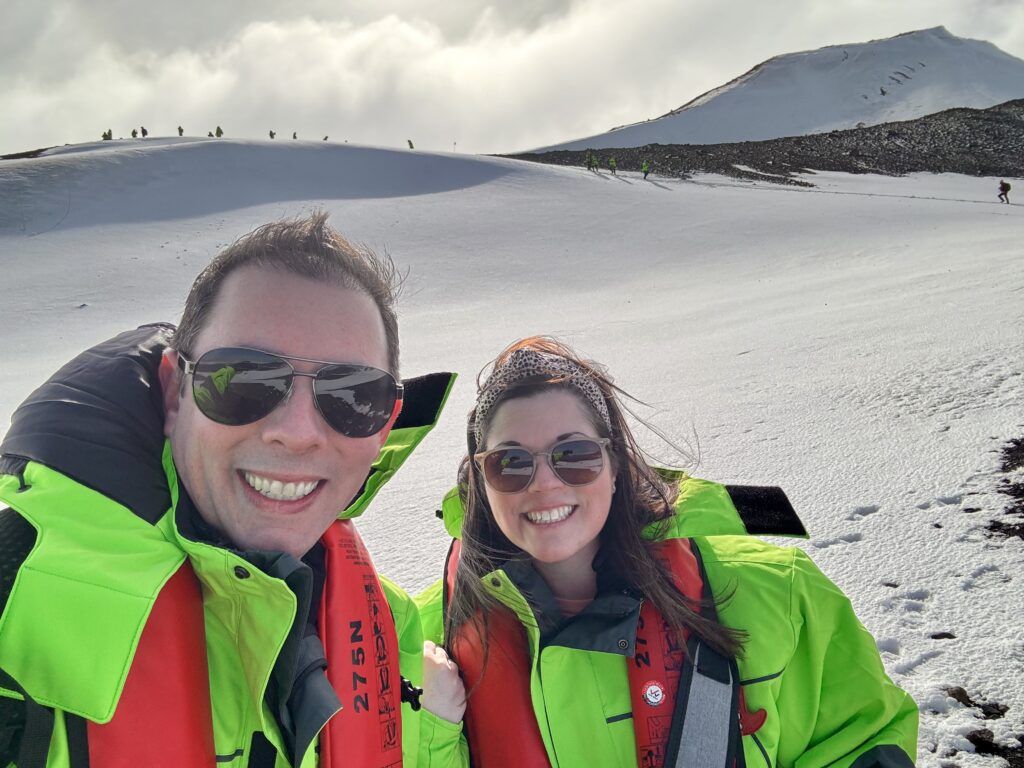
But, the very next day, we encountered rapidly deteriorating conditions, with snow accumulating several inches in just a few hours, completely transforming the landscape and making landings impossible.
We had entire days where we got all geared up in our waterproof pants and layers, only to hear the announcement: “Due to deteriorating conditions, today’s landing is canceled”. Sometimes, high winds made zodiac operations unsafe. Other times, sea ice blocked access to landing sites. Occasionally, it was simply poor visibility restricting our operations.
One morning at Cierva Cove, we were literally in the zodiac boat and ready to explore, when conditions changed so quickly that they had to call us back. Winds went from manageable to dangerous in about 15 minutes.
Yet, the Captain kept trying to find us sheltered bays where we could safely operate the zodiacs. After our planned visit to Cierva Cove was aborted, we headed to Chiriguano Bay, hoping for better conditions.
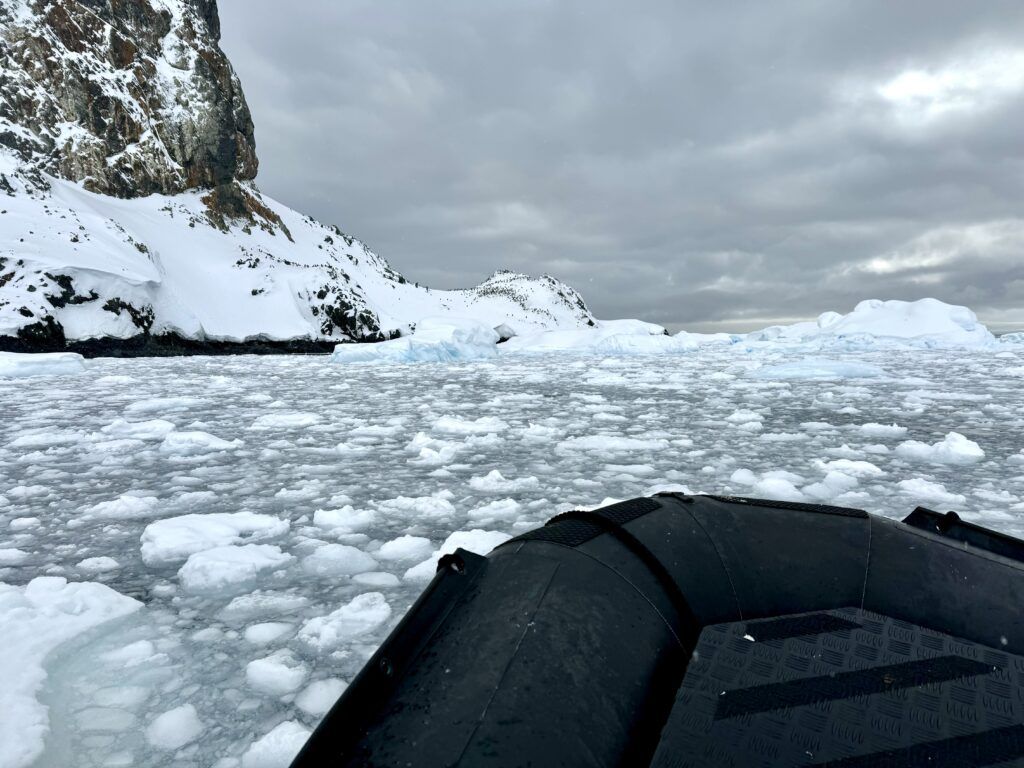
Surprisingly, though it was overcast with fresh snow on the ground, the expedition team approved abbreviated zodiac rides. Zooming around these icebergs was one of our favorite activities of the whole trip.
Finally, we thought we’d get a full day of excursions. But, the afternoon destination at Jugla Point had to be changed yet again when the channel closed due to rapidly shifting ice conditions. It shouldn’t be surprising that the expedition team’s constant phrase became “flexibility is mandatory”.
Know the Physical Demands of Your Antarctica Expedition
The physical demands of an Antarctica expedition are another reality check. Every shore landing involves climbing down a gangway, stepping into a bobbing zodiac boat, making a wet landing (yes, that means wading through freezing water with appropriate gear), and then hiking across uneven, often slippery terrain.
If you have significant mobility issues, this could be challenging. However, in our experience, these demands are manageable for most people in reasonable physical condition.
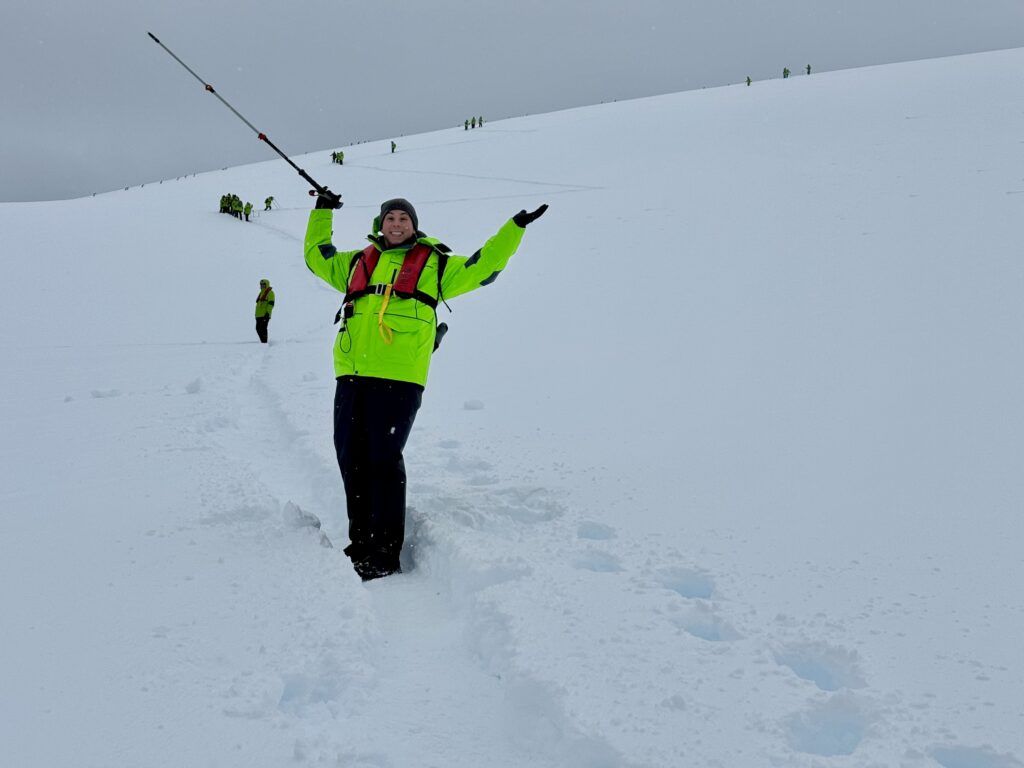
At Pendulum Cove on Deception Island, the path up to the viewpoint was rather steep and slippery, but the effort was totally worth it.
The great thing about these landings is that they typically accommodate various fitness levels. For example, at Danco Island, some passengers hiked up for panoramic views while others enjoyed the amazing penguin-watching along the flatter areas.
Although there was typically just one main hiking path available, guests could usually complete only a portion if it got too difficult.
Given the regulations in Antarctica, guests are not allowed to wander on their own. Everyone has to stay within clearly marked areas.
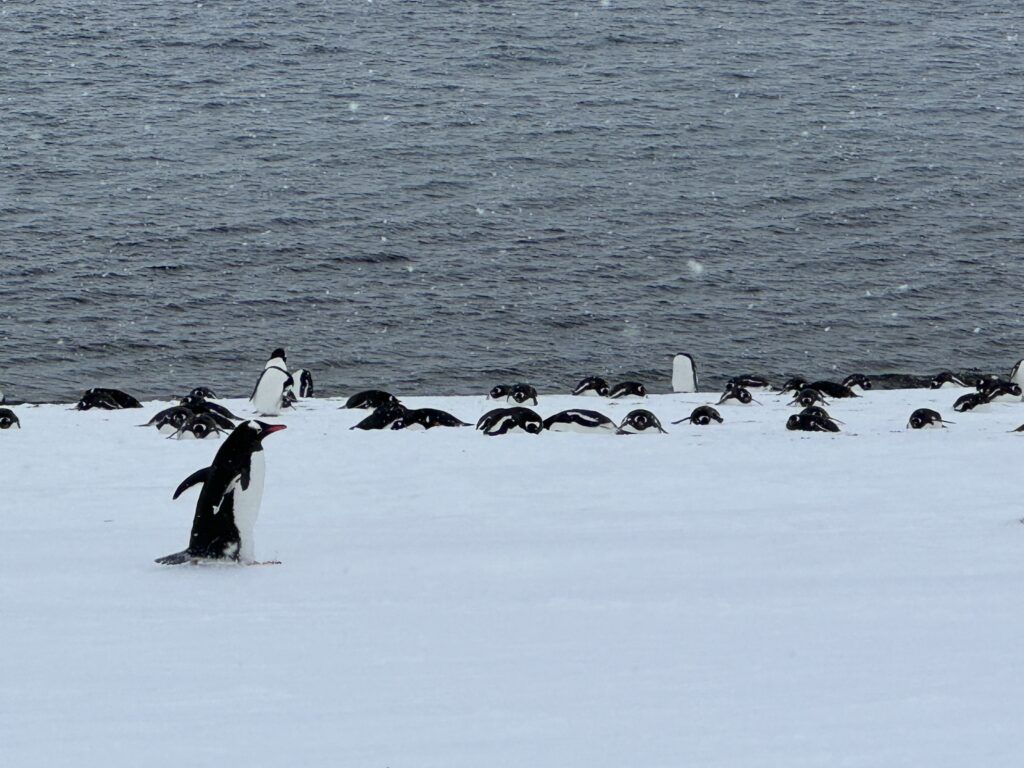
During these outings, the expedition team were always on hand to guide you, provide information, lend a hand if you were struggling with the terrain, or just take your photo.
Thus, you don’t need to be a polar explorer to enjoy Antarctica. However, being honest about your physical limitations will help you set the right expectations once ashore. Some expedition cruise lines are more adventure-driven and may be more physically demanding, but we found Atlas to be the perfect mix for us.
The Breathtaking Moments on Our Antarctica Expedition
Through all the uncertainties and ever-changing conditions, there were so many breathtaking moments. It was unlike anything else we had ever experienced.
Our First Penguin Sightings
All the difficulties quickly fade away when you have your first truly unforgettable Antarctic moment. For us, it happened at Whaler’s Bay on Deception Island.
As soon as we stepped ashore on this black volcanic beach, we immediately spotted Gentoo penguins going about their day as if we weren’t even there. Then, they approached us, being just as inquisitive and interested in us as we were in them.
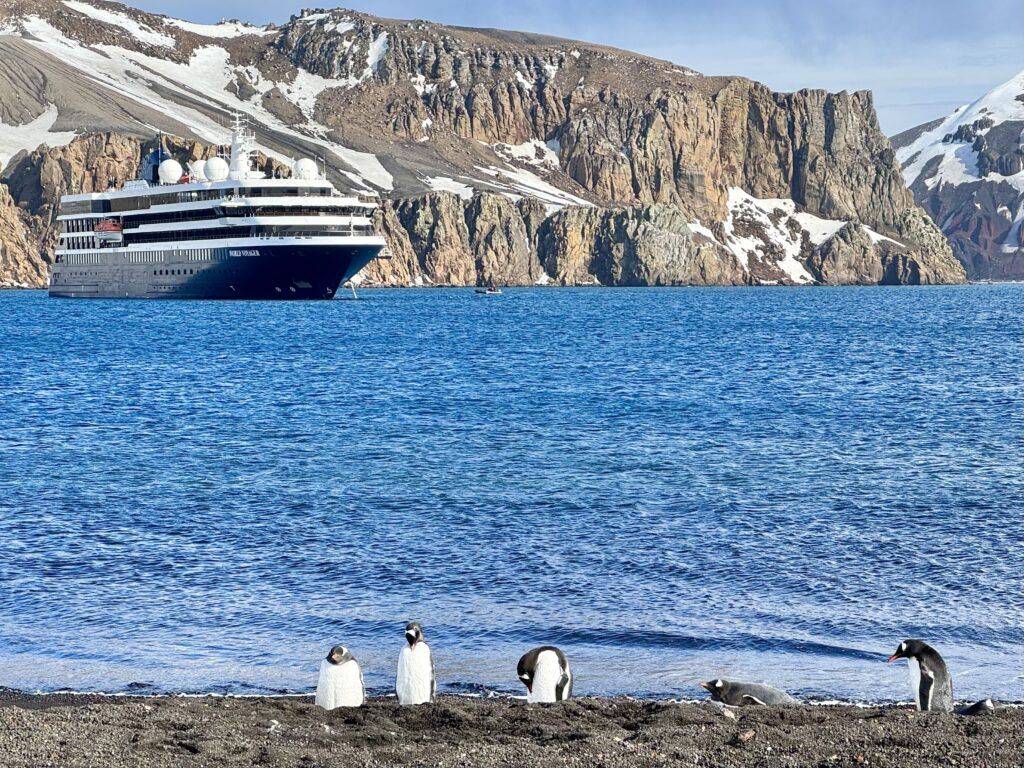
That genuine connection with wildlife in its natural habitat is something you can’t experience in a zoo.
After missing a few planned landings due to weather, we finally woke up to relatively calm conditions and were able to go ashore in Danco Island on the final day of our Antarctica expedition. The island had this massive rookery of penguins, with hundreds of them making their way up and down the snowy hillside. We couldn’t help but just watch in awe.
An Antarctica Rite of Passage
That same afternoon, we made our final attempt to reach Orne Harbor for a continental landing. When we arrived, however, the expedition team found a large icefield blocking easy access to shore. Instead of canceling altogether, they offered to take us on one last zodiac ride that would still allow us to “touch” the continent.
During this memorable excursion, we spotted a leopard seal lounging on an ice floe. Soon after we approached, it slid into the water with surprising grace for such a large animal.
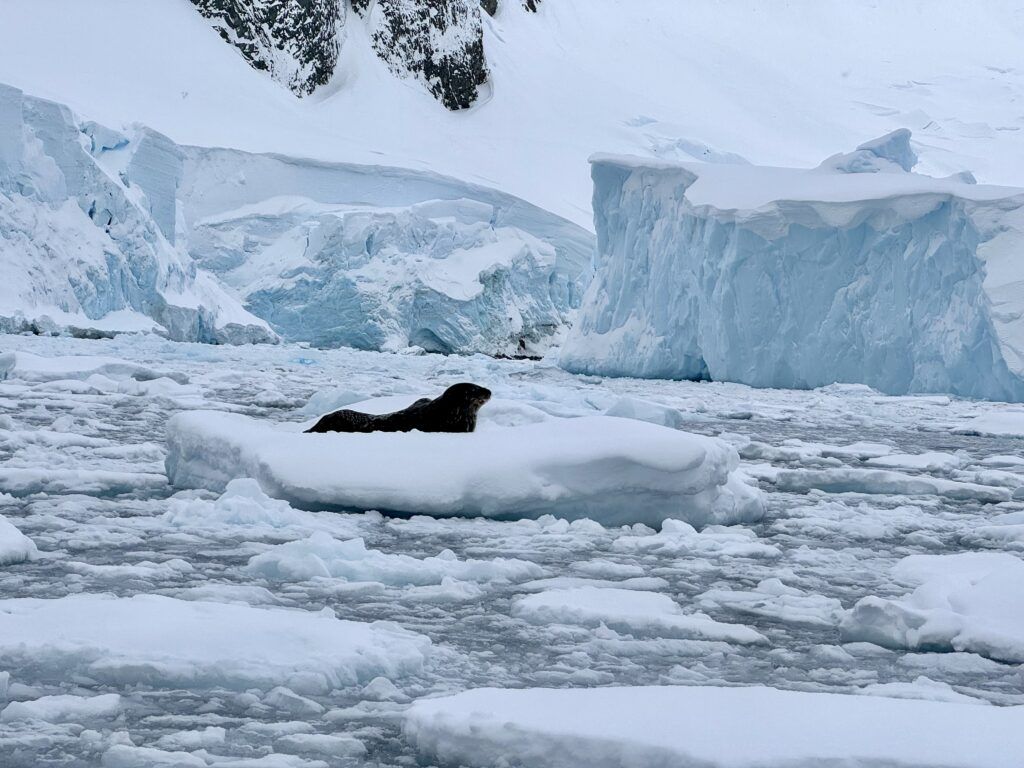
As our journey continued, our zodiac captain navigated us through partially frozen waters, slicing between massive icebergs. At one point, our guide cut the engine for a moment, and subsequently, the silence was absolute. No city noise, no planes overhead, no human sounds at all—just occasional ice creaking and water lapping against the boat.
Ultimately, we reached close enough to the Antarctic shoreline that we could stretch out and place our hands on the peninsula.
While we’ve been to some pretty amazing places, Antarctica makes you feel small in the best possible way.
To cap off this final day, the expedition team found an ideal spot for the polar plunge, an Antarctica rite of passage!
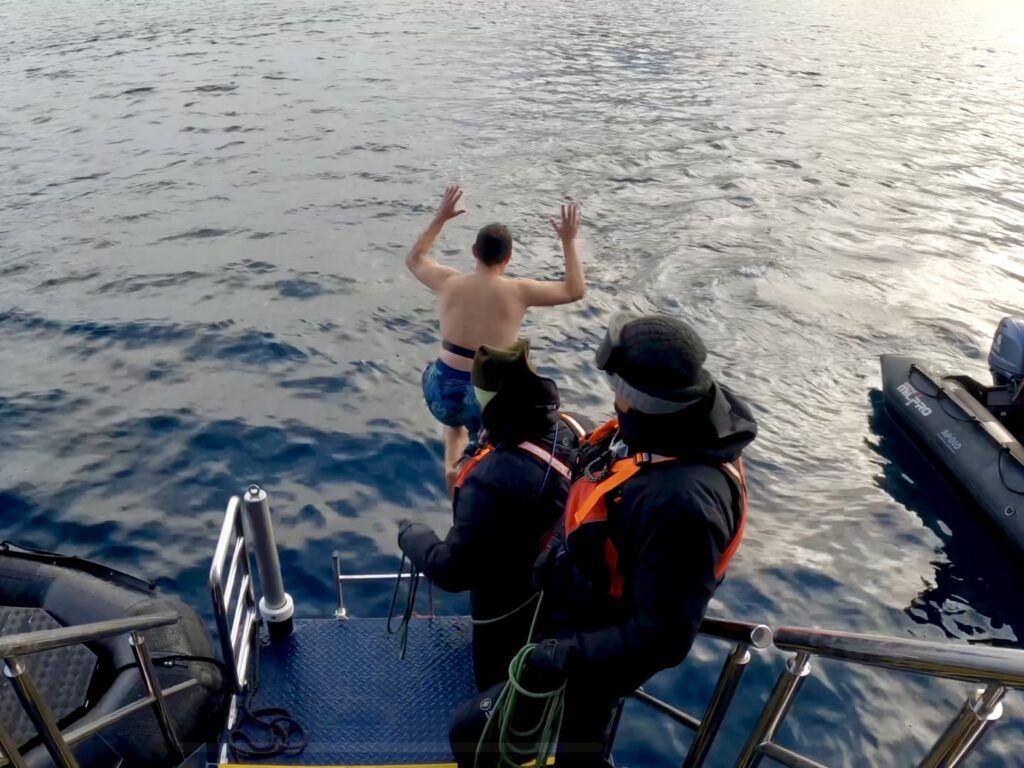
With water temperatures hovering at a frigid 30 degrees Fahrenheit, about 60% of passengers braved the Antarctic waters. I joined in while Heidi volunteered to take photos instead. Jumping into that icy water was simultaneously terrifying and exhilarating and was the perfect way to end our unforgettable journey.
Is an Antarctica Expedition Worth it?
So, is an Antarctica expedition cruise worth it? To help you decide, here’s a detailed breakdown.
Yes, these trips are expensive with much unpredictability. Our 9-night Atlas Ocean Voyages expedition started around $7,500 per person, and that was with a 2-for-1 promotion. Though, trips with luxury lines like Silversea or Viking can easily hit $15,000 to $20,000 per person.
Nevertheless, when you break down what’s included, the value becomes clearer:
- All meals and premium drinks
- Use of expedition gear like parkas and boots
- Expert guides who enhance everything you see
- Shore landings that bigger ships can’t offer
- Zodiac cruises right up to wildlife and icebergs
Being in our early 40s, we were worried we’d be among the youngest passengers. That wasn’t the case at all. Generally speaking, our fellow travelers were in their 40s and 50s, with a few honeymooners in their 30s and some active retirees. Ultimately, it was a much younger, more diverse group than we expected.
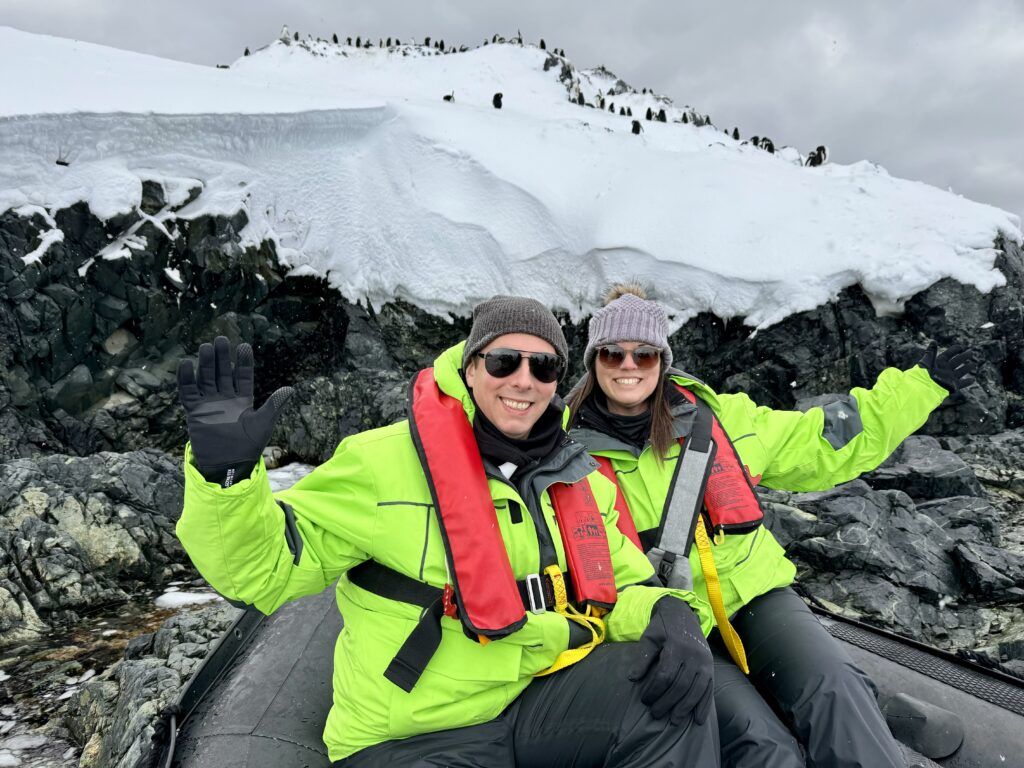
Additionally, the vibe of Atlas Ocean Voyages wasn’t too far out of our comfort zone— it struck the perfect balance between expedition and luxury cruising.
An Antarctica expedition cruise is perfect for:
- Nature and wildlife lovers
- People who appreciate both adventure and comfort
- Photographers
- History buffs interested in exploration and discovery
- Those who’d rather have a unique experience than another day at the beach
However, this type of cruise really isn’t for everyone. You should probably reconsider if:
- You’re prone to motion sickness and concerned about the Drake Passage
- You have mobility issues that would make zodiac operations and uneven terrain difficult
- You’re working with a limited travel budget
- You prefer tropical climates or places with more infrastructure
- You get frustrated when plans change due to circumstances beyond your control
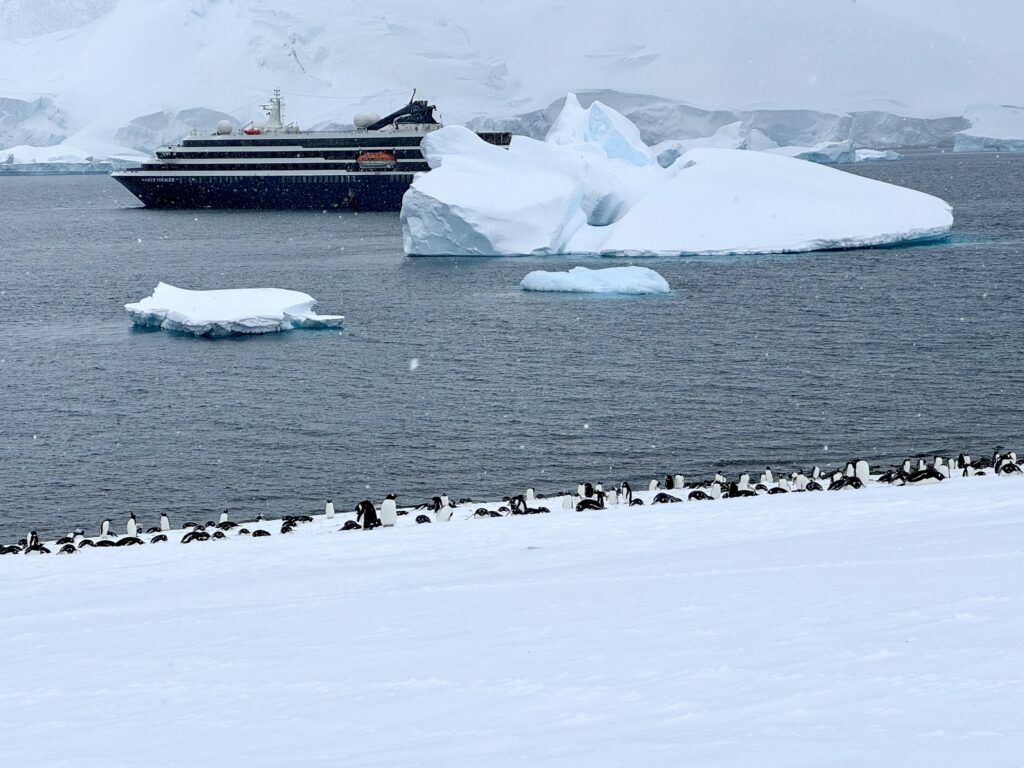
Additional Tips for an Antarctica Expedition
- Above all, don’t overpack. The ship provides parkas and boots, so save that space in your luggage. Layers are essential; a good base layer makes all the difference. We definitely brought too many sweaters and sweatshirts that we never ended up wearing as the parkas are quite warm.
- As one of our tried-and-true cabin hacks, pack those magnetic hooks! They’re perfect for drying gloves, hats, and gear in your cabin.
- Besides that, bring ALL the seasickness remedies, even if you’ve never been seasick before. The Drake is no joke, so be prepared just in case.
- In addition, take advantage of the educational talks onboard. They make everything you see more meaningful. On Atlas Ocean Voyages, these talks reviewed the day’s events and previewed what to expect tomorrow.
- Finally, when conditions change or landings get canceled, go with the flow. Flexibility is key when in Antarctica. After all, some of our best moments happened when plans A, B, C, and D fell through, and we ended up with unexpected plan E.
Looking back at our trip, even with the rough Drake crossing, some initial frustrations over canceled landings and ever-changing schedules, and a ship much smaller than those we usually cruise on, we would certainly do it all again in a heartbeat. Next on our bucket list is an Arctic expedition to see polar bears!
Comments
Have you taken an Antarctica expedition? Would you sail with Atlas Ocean Voyages? Drop us an anchor below to share your expedition cruise experiences.


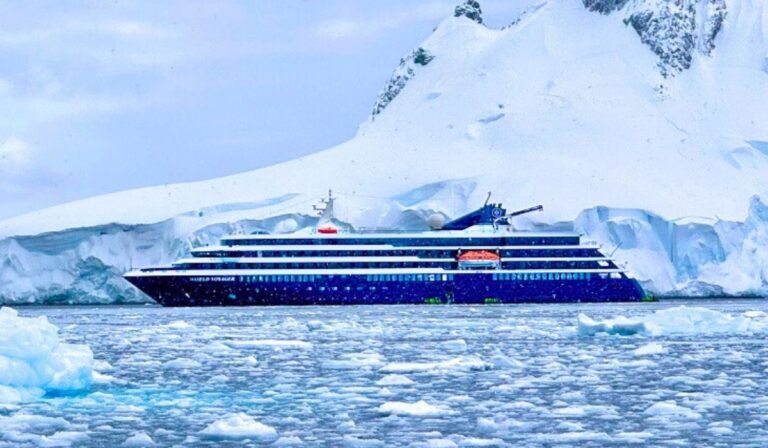

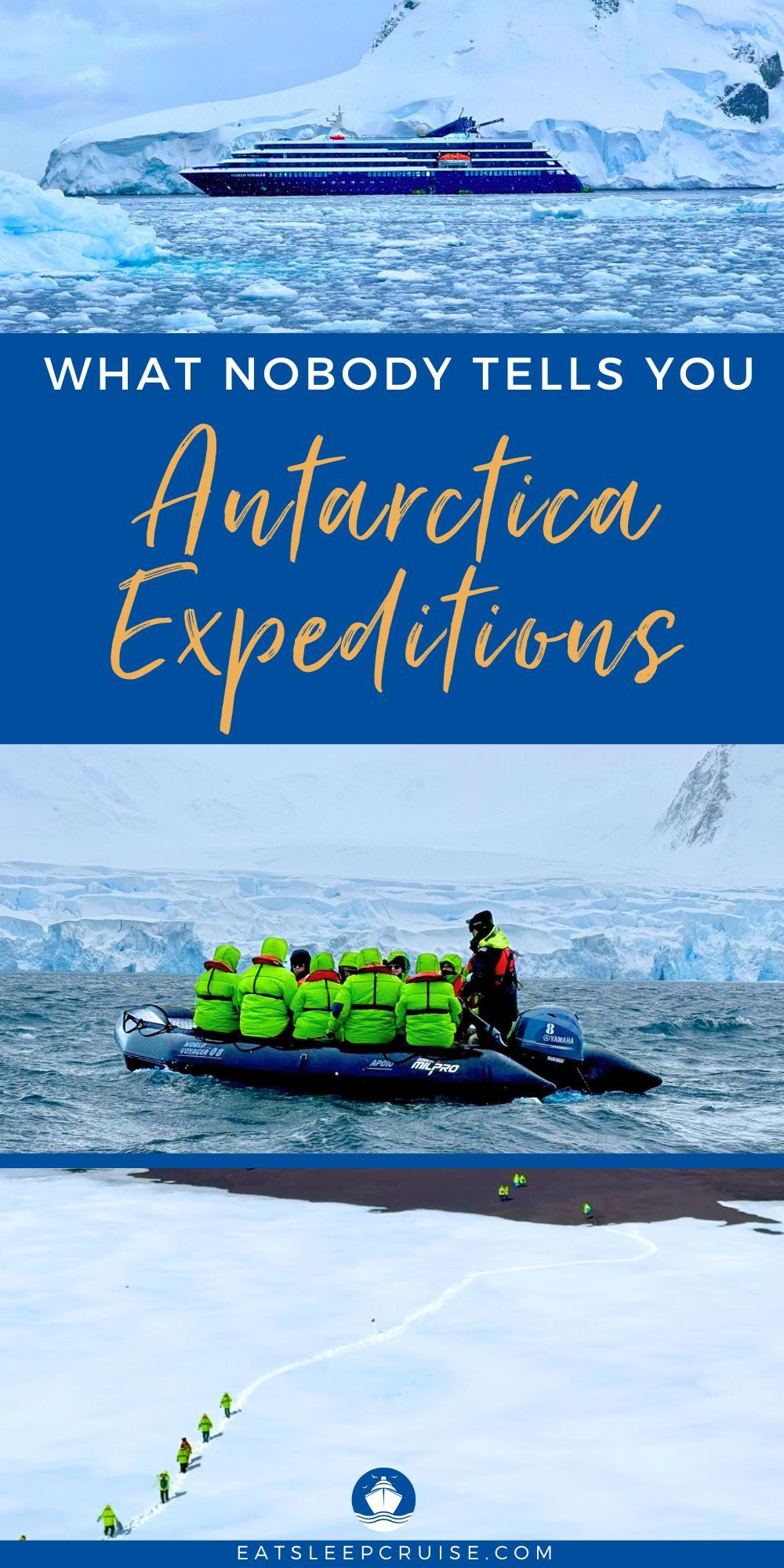
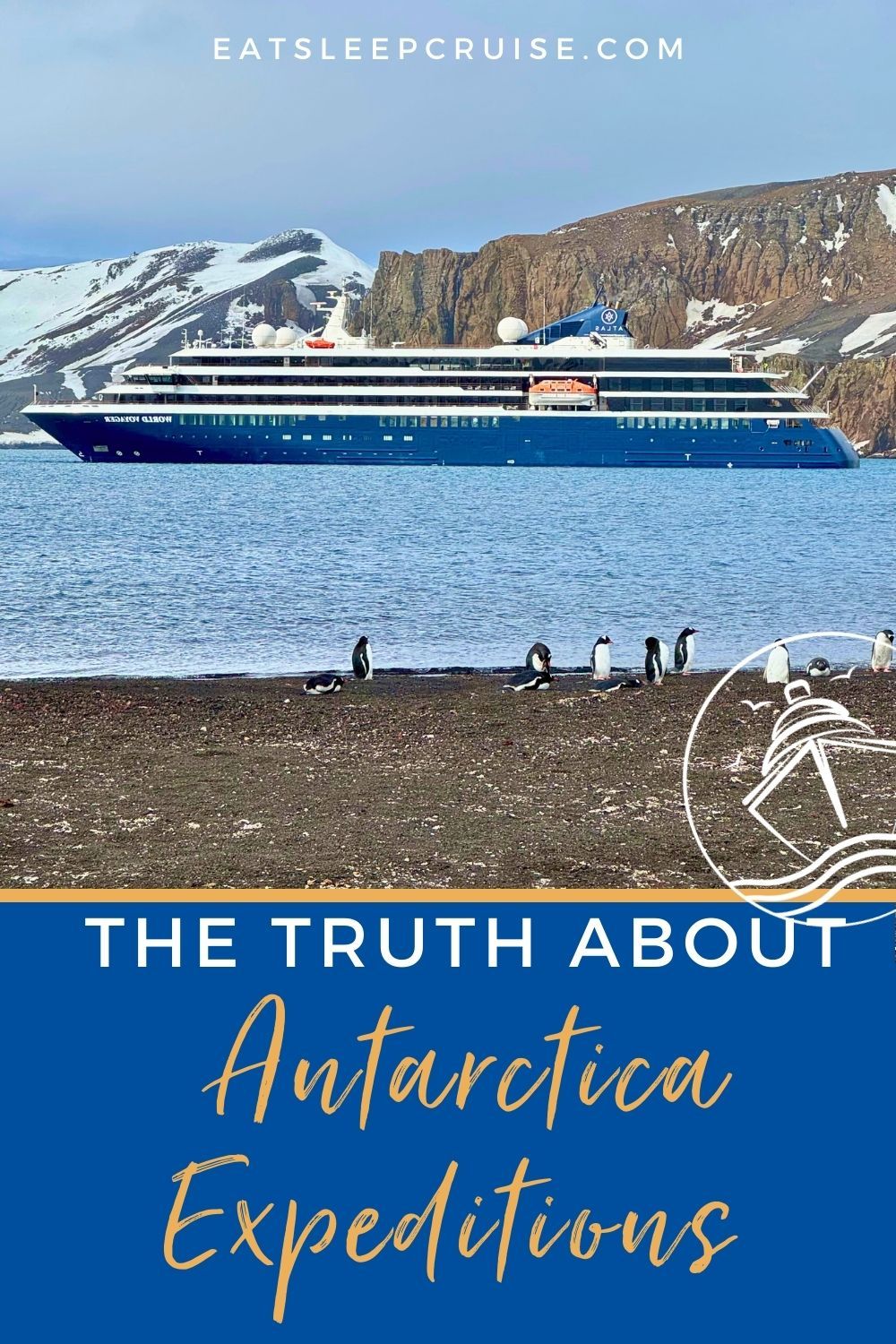
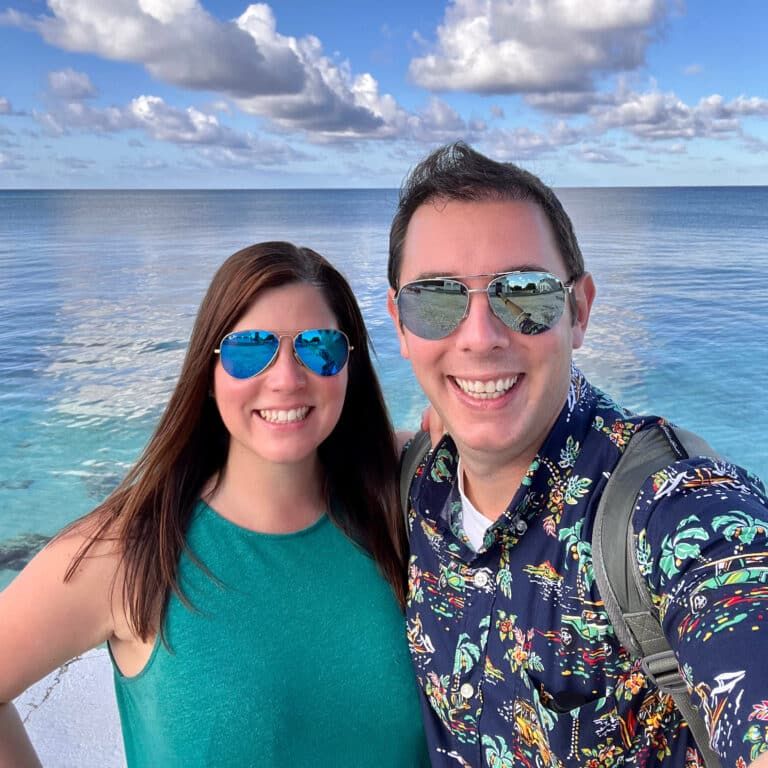

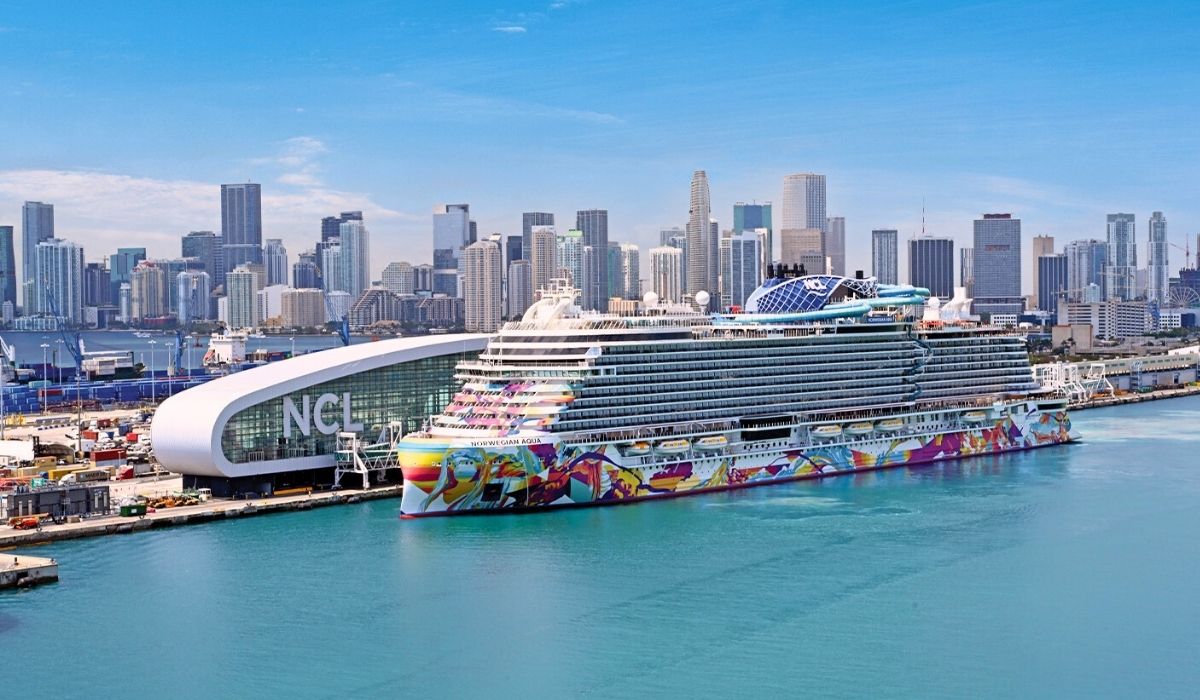
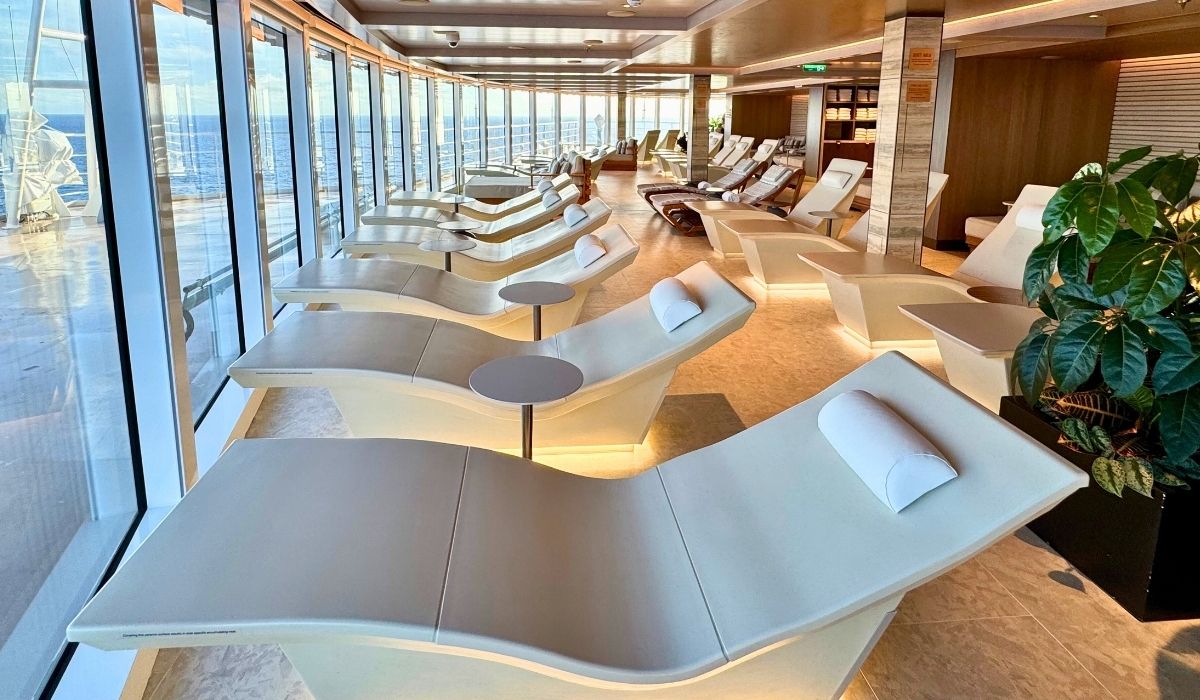

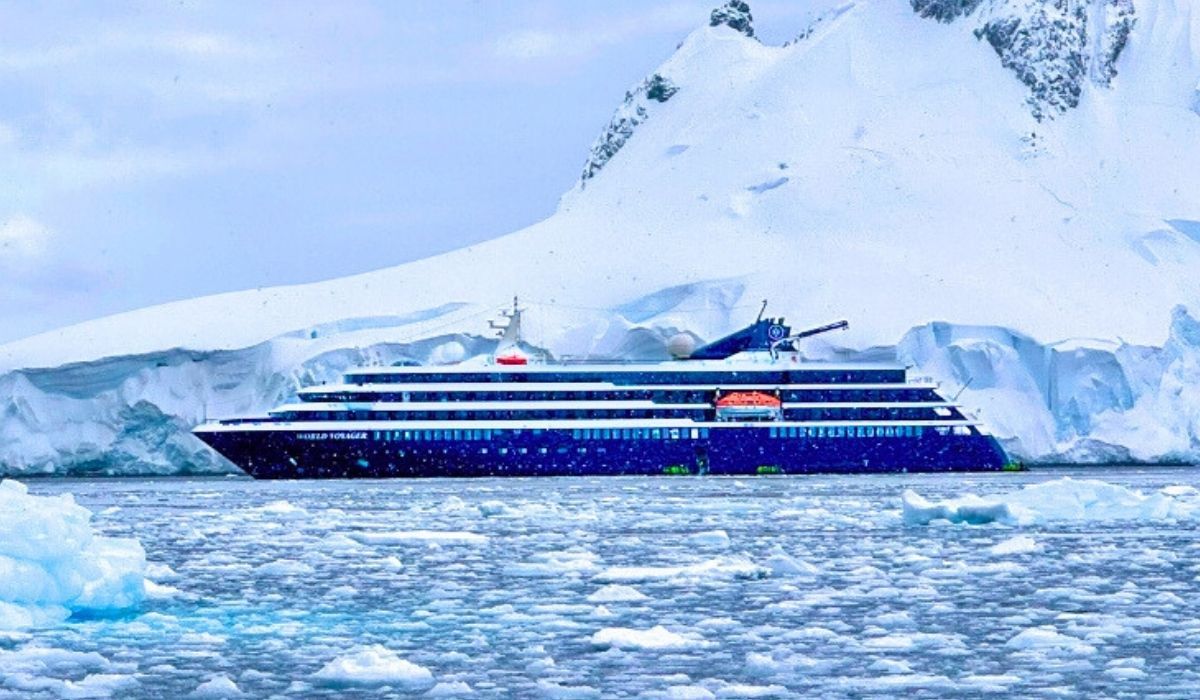
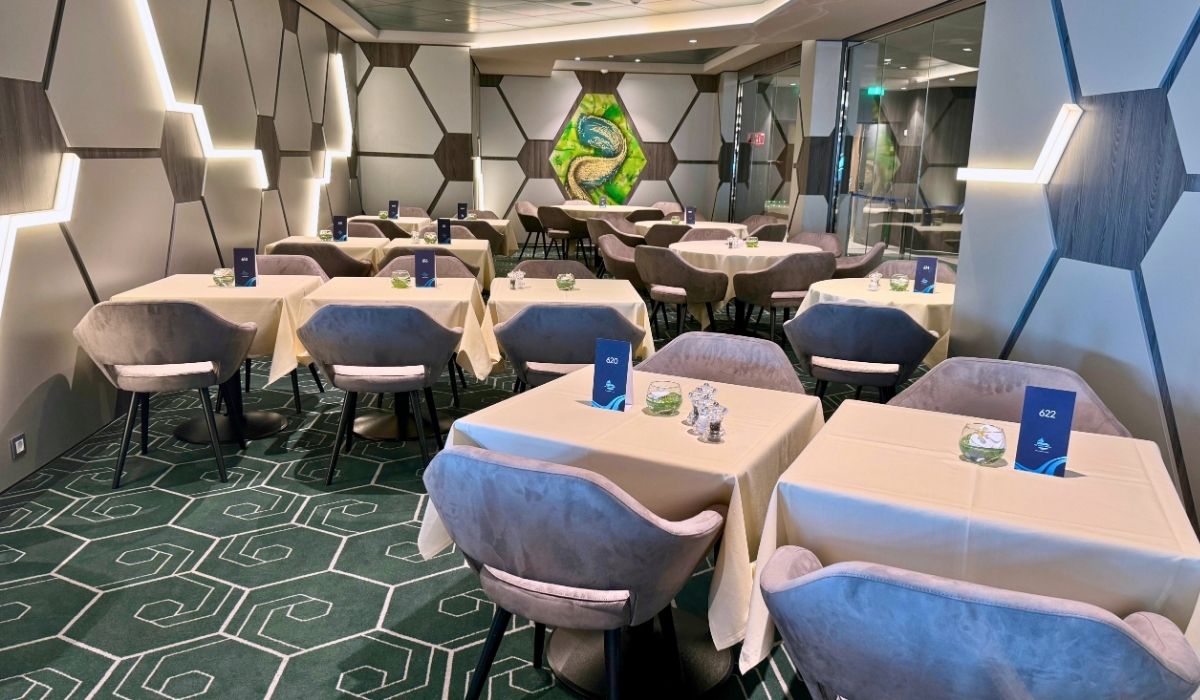


3 comments
daryl rock
great article …definitely on our list! thanks for the info about the cruise line!
Don Bucolo
Glad you found it helpful. When is your next cruise?
daryl rock
great article …definitely on our list! thanks for the info about the cruise line!